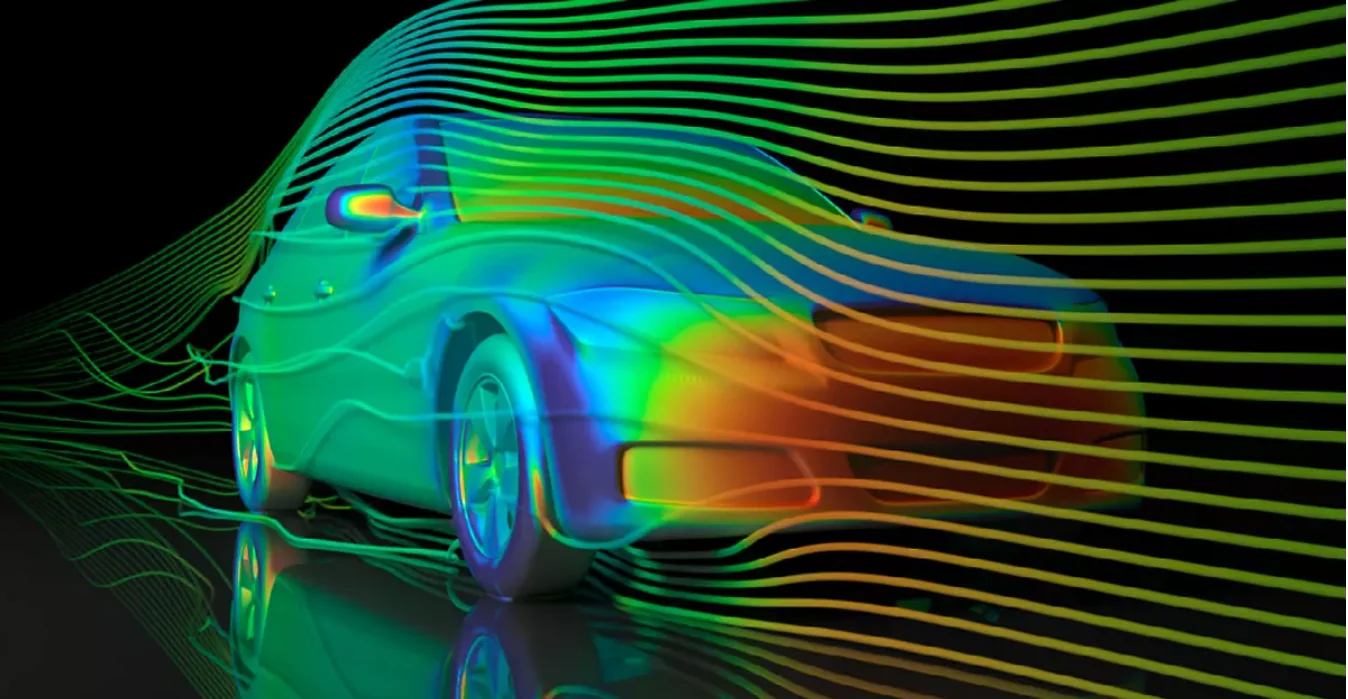Accelerating CFD with GPUs: How Ansys Discovery and Fluent Unlock 10× Faster Simulations

For decades, CPU performance followed Moore’s Law, doubling roughly every 18 months. But that growth flattened long ago. CPUs gained more cores, yet their per-core speed plateaued.
GPUs, originally designed for rendering graphics, evolved in a different direction. They’re optimized for parallel workloads, handling thousands of calculations simultaneously, perfect for CFD.
The result brings order-of-magnitude performance gains. Modern GPU solvers can deliver up to 10× faster runtimes than CPU clusters, while consuming less energy and requiring less cooling. Engineers can iterate more often, explore more ideas, and make better decisions faster — all without sacrificing accuracy.
Beyond the hardware numbers, GPU acceleration directly improves how engineers work.
In short, GPUs deliver high-performance simulation without the high-performance price tag.
Ansys Discovery brings GPU acceleration into every stage of the design process. It integrates modeling, simulation, and design exploration in one platform which is ideal for engineers who need insight fast.
Discovery includes three key stages:
Discovery’s CFD ‘engine’ runs the same native GPU solver as Fluent. That consistency ensures accuracy across both platforms while keeping workflows seamless.
Meshing has long been a pain point for engineers, but Discovery’s new GPU-based mesher is a game changer. Introduced in 2025 R1, this Voronoi-type meshing approach is fast, robust, and fault-tolerant which is ideal for complex geometries.
Key benefits:
The result is a mesh that’s accurate, stable, and generated in a fraction of the time, so users can focus on simulation rather than setup.
When it’s time to dive deeper, Discovery’s Refine Mode lets you switch seamlessly to advanced meshing and solvers. Engineers can choose between tetra-prism or poly-hexcore meshing, both integrated with Ansys Meshing, and then solve with Fluent’s GPU-accelerated solver.
That continuity means you can start in Discovery for rapid exploration, then transition to full-scale CFD without re-building models or losing data integrity.
Ansys Fluent has long been the industry standard for CFD, and its new native GPU solver is a complete rebuild, not just a GPU-adapted version of the CPU code.
This solver was designed from scratch for multi-GPU architectures and has been expanding feature-by-feature:
With each version, the gap between GPU and CPU functionality narrows and the performance advantage grows.
Benchmark after benchmark confirms the same story – massive performance gains.
A real-world example: a full 360° compressor model with 45 million elements once required a week of CPU compute time. With GPU acceleration on an A100 card, the same simulation completed in three hours requiring a fraction of the energy and cost.
These improvements don’t just save time, they transform how teams approach design. More iterations mean more insight and better optimization within the same project schedule.
With Ansys 2025 R1, GPU workflows got a significant usability boost thanks to the new CFD HPC Ultimate license.
This single enterprise-level license allows:
Switching between CPU and GPU solvers is straightforward: in Fluent Launcher, simply toggle the Native GPU Solver option. Fluent automatically checks for compatibility and highlights any unsupported physics.
Speed is only part of the equation. Results must also be reliable. Every new GPU solver feature undergoes strict validation against CPU-based results.
Engineers can access validation reports directly through the Ansys Help Portal, comparing GPU and CPU outcomes for key benchmark cases. In many transient simulations, the GPU solver even shows faster convergence and smoother residuals due to updated numerical schemes.
The move to GPU computing is one of the biggest shifts in simulation in decades. CFD engineers no longer have to compromise between mesh size, model fidelity, and run time.
With GPU solvers, we’re seeing:
